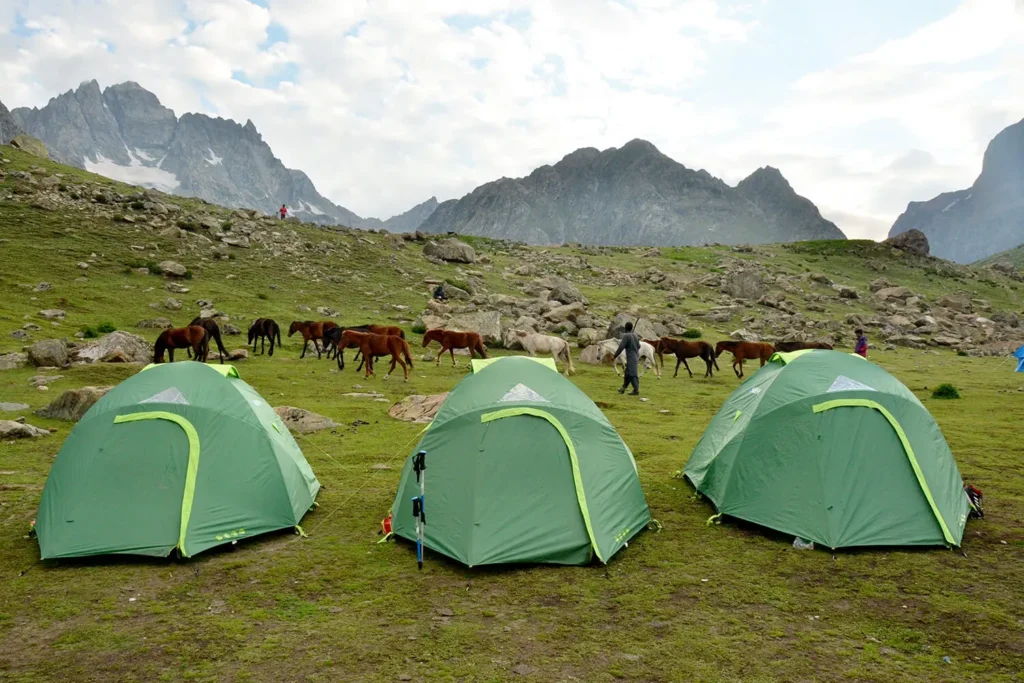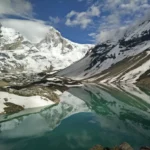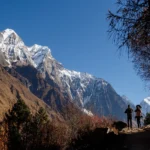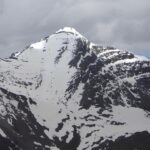Exploring outdoors is full of adventure, however, if you are not well versed with the basics of choosing a campsite, the experience can be troublesome.
We know that you love trekking and challenging yourself in the outdoors. After booking a trek, you get packed with all the gear & equipment, and finally, reach the base camp of your trek.
Excited enough, you start the trek going through the forest, crossing a river, and climbing up and down the trail, you arrive at the first campsite which was erected before you got there and the outdoor instructor assigns you a tent to get in.
Till this point, you are not involved in any decision-making, because either you are a tourist in the eyes of the trekking organization, or you do not possess enough knowledge to critically assess or question the campsite selected by your instructor, and you do not know how to pitch a tent. As you are tired, you get in your tent and get ready for meals.
‘Campsite selection is an indispensable outdoor skill’
Now, imagine a situation where because of a slight error in judgment, the tents were erected in a high wind passage. As night sets in, you tuck yourself in the sleeping bag, and suddenly wind starts flowing at high speeds causing your tent to flutter violently.
What do you do?
Well, this situation could have been avoided in the evening itself if you knew the fundamentals of picking a good campsite. The decision to finalize a campsite should be an informed one and take into consideration various factors.
How to choose a perfect campsite location?
To help you avert similar undesirable situations and ensure a good night’s sleep, we are going to equip you with the fundamentals of campsite selection.
The camping guide will help you to avoid any troublesome situation that can arise due to the wrong campsite location.
Let’s run you through a camping checklist. Below are the factors involved in deciding the location of the campsite based on decreasing order of their importance :
1. Safety
It is the most important aspect of choosing a campsite. Based on these simple observations, you could be avoiding any risk to your and team members’ lives. Your campsite should be :
- Away from erect dead trees which might fall because of wind.
- Not in proximity to low-height vegetation to prevent branches poking in your eyes.
- Not in areas prone to avalanches, rock-fall, ice-fall, and high-speed wind passages.
- At Least 200ft away from water sources to leave an access route for the wildlife. (This also averts the risk of being in the flash flood region)
- Away from any animal trails.
- In an open area away from very high vegetation or any other lightning-attracting entities.
2. Minimum Impact
You have to be careful about your impact on the natural setting of the pristine landscapes. Leave No Trace principles are the single greatest source of information on how to tread in the outdoors without leaving any impact. Your campsite should be :
- Erected on previously developed campsites, to make use of the impacted surface and already created social trails (trails developed while operating the campsite).
- Established on dry areas away from water run-off areas, as the movement of water from the campsite might pollute the water source.
- Do not dig trenches or level the ground for comfort reasons around the campsite.
- Do not disturb the natural setting at the campsite or surrounding areas. These have evolved over a long period of time.
- Prevent overuse of the site, and limit your stay to a maximum of 2 days to allow the surface enough time to breathe.
3. Durability of Surface

Unless you have a durable surface to establish your campsite, you’ll face problems during the operations of the campsite. Your campsite should be erected :
- On previously developed campsites as vegetation and soil cover is visibility disturbed and camping will not further aggravate the impact.
- Never on the living soil which houses communities of organisms, balancing the forest ecosystem, pristine vegetation patches, or near water sources.
- The most appropriate sites for camping are durable surfaces like gravel, sand, or rock. These surfaces can endure a lot of impact without deterioration.
- On dry meadows, these provide great durability against trampling with hard trekking shoes.
4. Comfort
This is the least important of all the factors while locating a campsite. These should only be considered when the chosen location fulfills the above three criteria. Your campsite should be :
- Close to a water source (But at least 200ft away as per the above factors) as it is required for cooking, drinking, and other operational purposes at the campsite.
- Large enough to accommodate your entire team without crowding at the campsite.
- Usually towards the slope of the mountain to provide shelter from the high-speed winds.
- On a flat surface to aid sleeping, and prevent sliding inside the tent when you are in the sleeping bag.
- Not in the low-lying areas as cold air accumulates in these regions.
- The direction of the campsite should be such that it exposes to the sun in the morning to get that dose of natural light.
- A VIEW!!
Equipped with these fundamentals, you can not only be critical of any choice which your instructor makes while choosing a campsite, but also carry out camping successfully when you are on your own. These are very basic, but indispensable tools you need to have in your mind to keep yourself safe and sheltered when you are outdoors.
‘Understanding campsite selection is when you are camping alone’
Hope this was a great learning experience for you, and you’ll keep these fundamentals in mind and implement them whenever you get a chance. Outdoors are beautiful and adventurous, but only till the time you are aware and paying attention to ever-changing situations and respond accordingly.
OWLS is a community of dedicated individuals who want to spread nature’s word and help you get close to it. We educate on the practices to be followed to successfully tread through the outdoor world. Subscribe to our blog to read more of such informative blogs and keep yourself updated with the outdoors.





